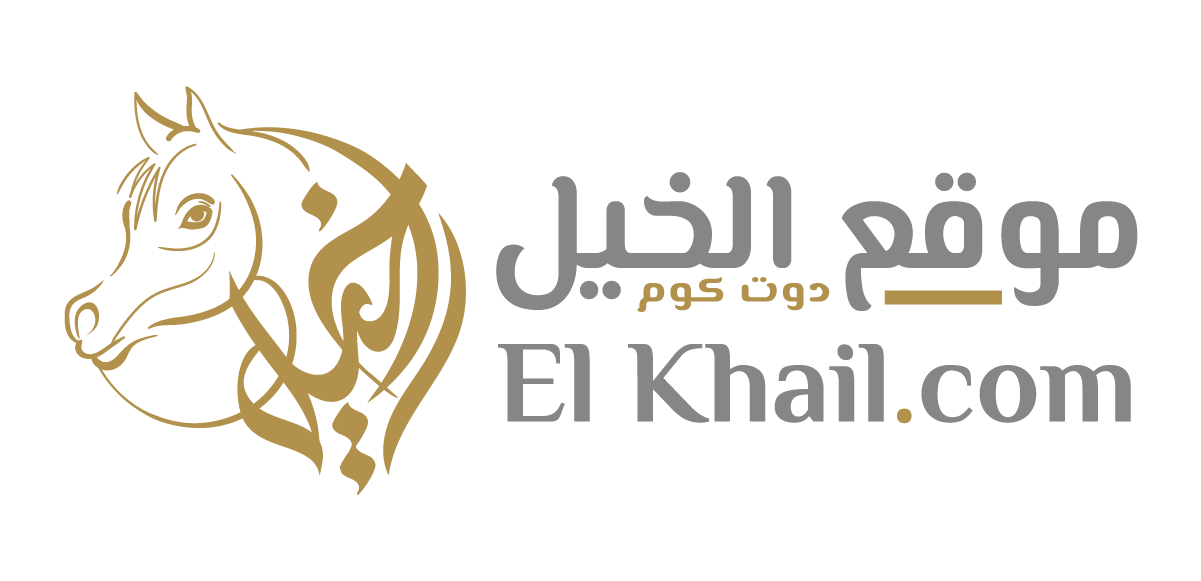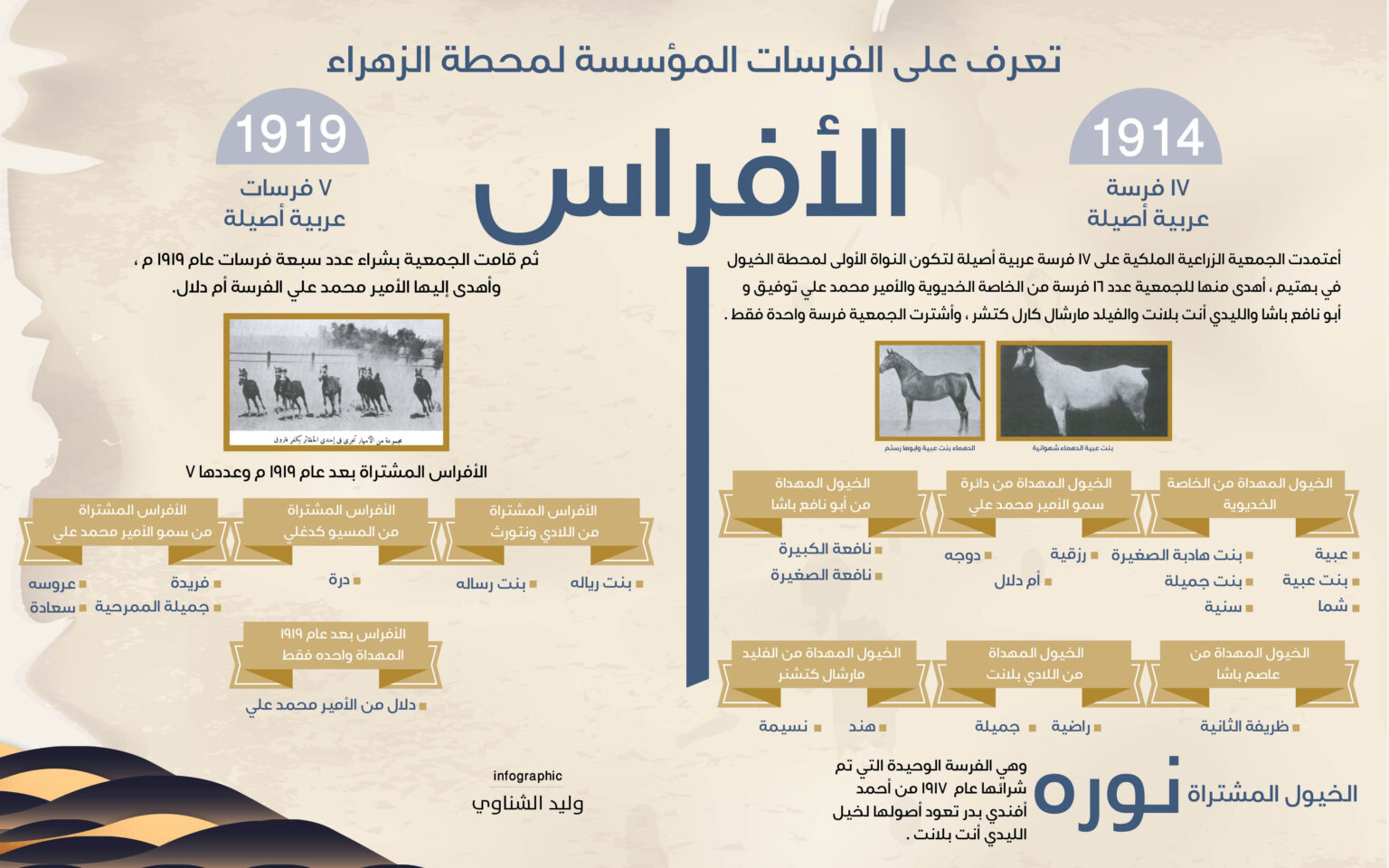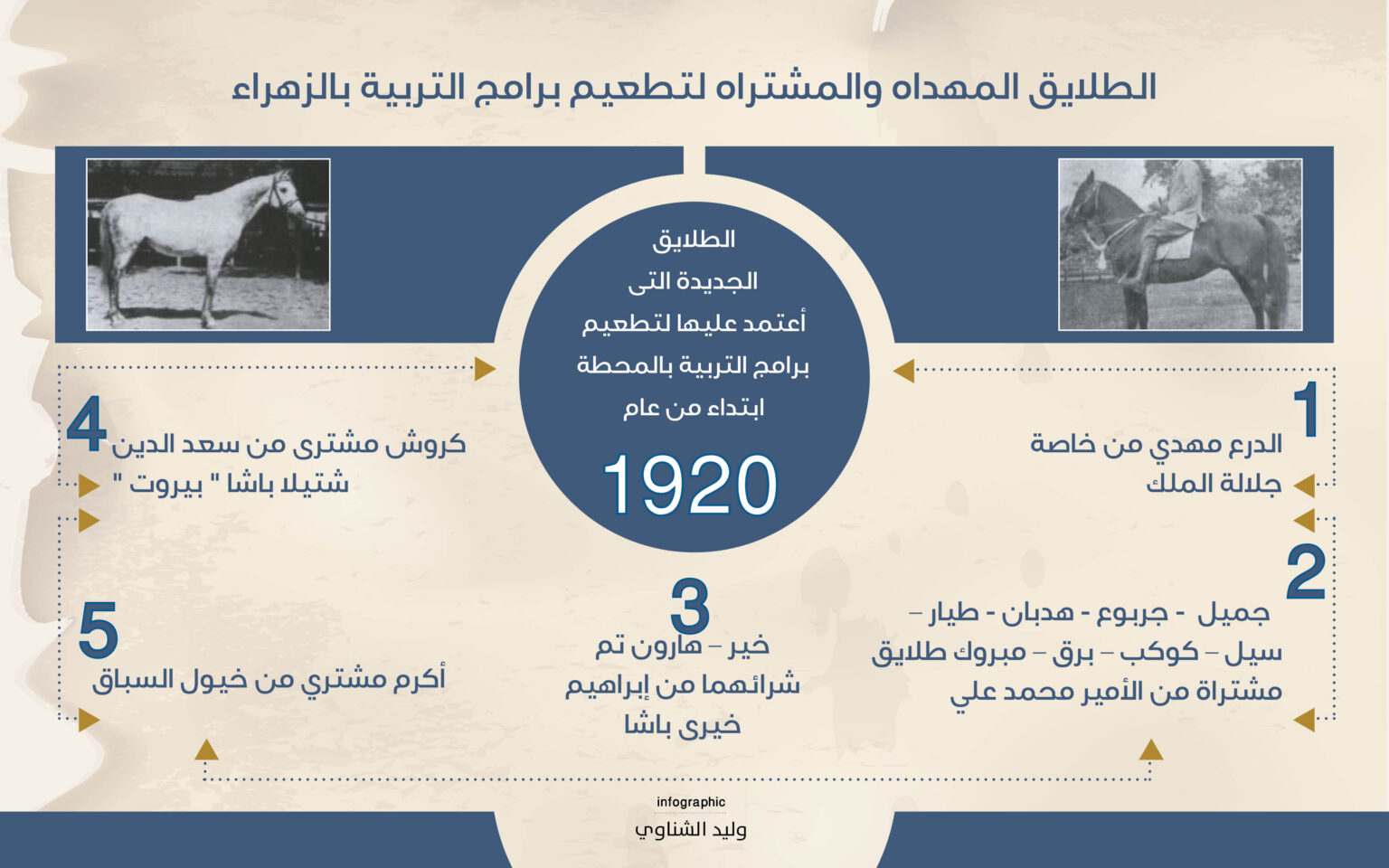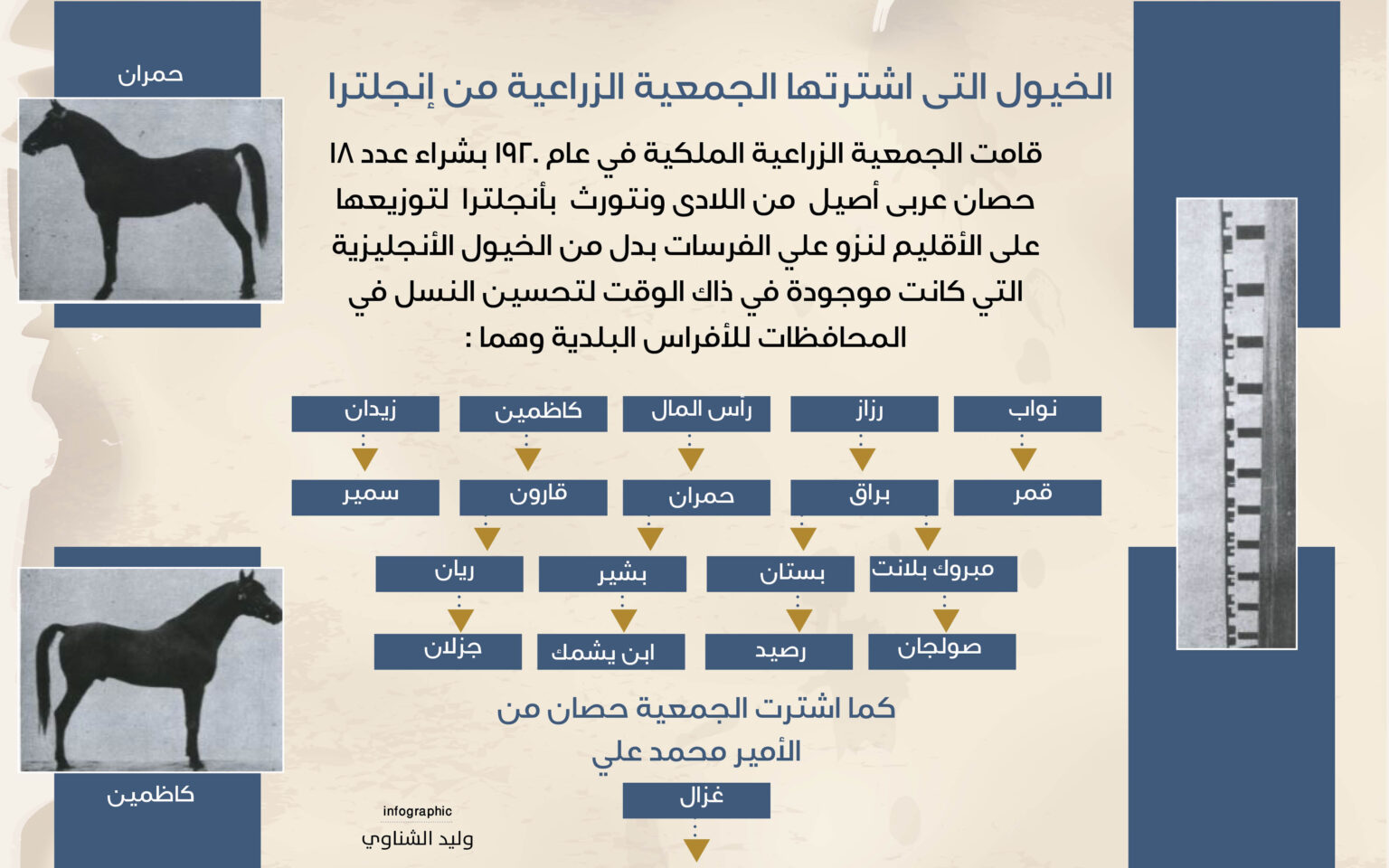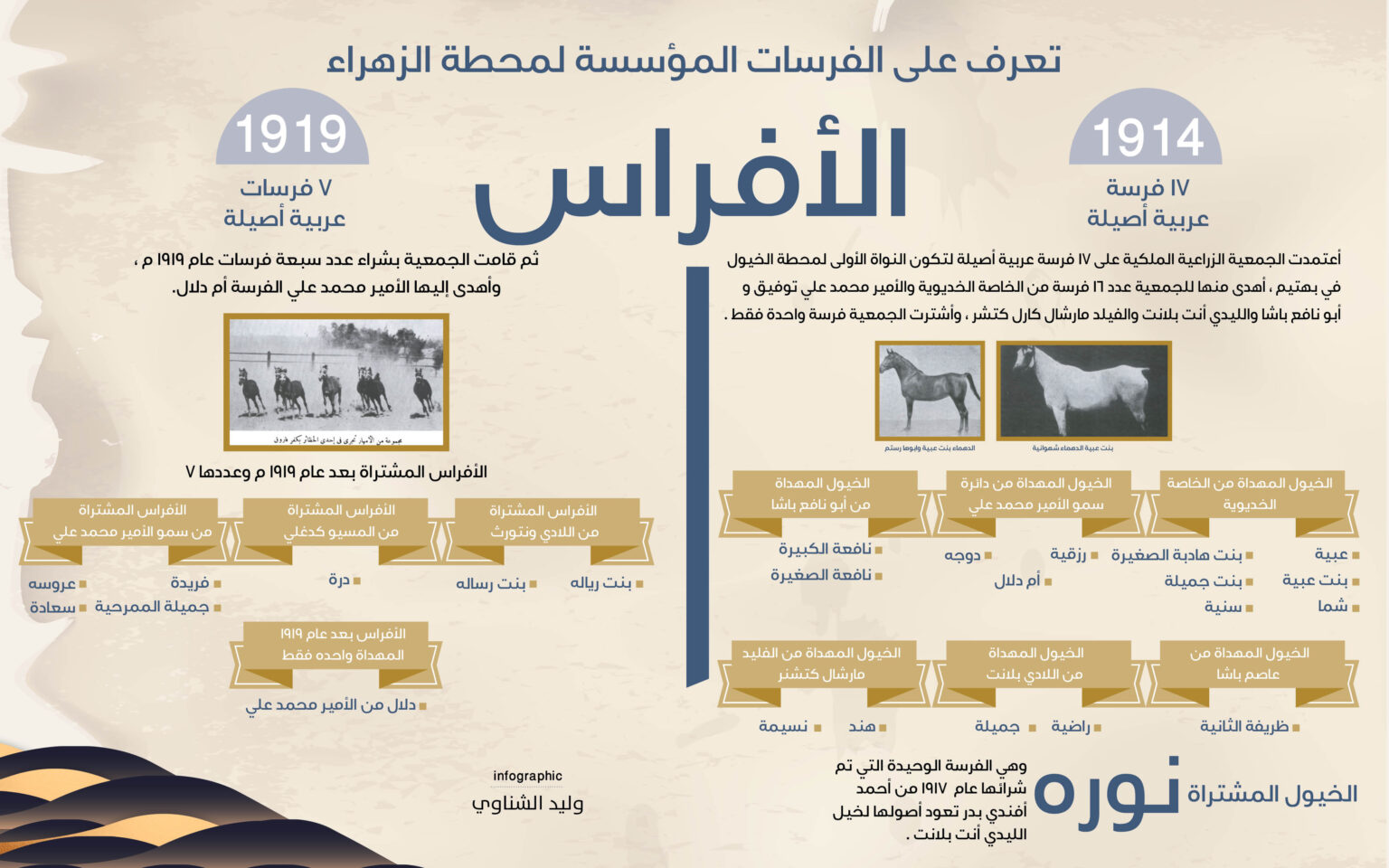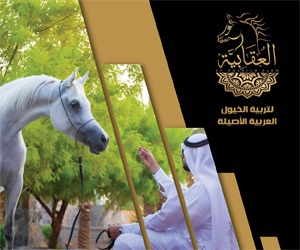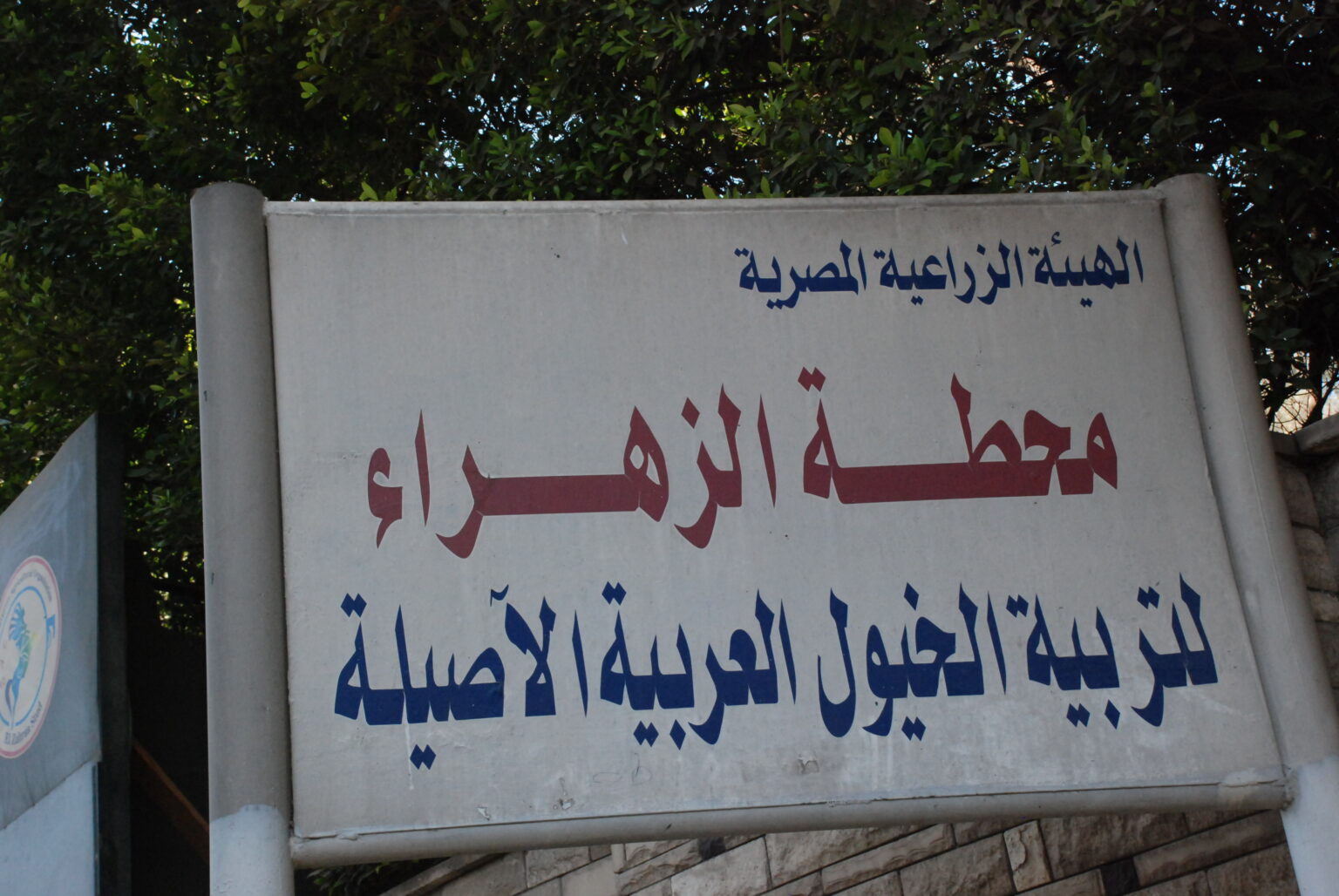The appearance of white spots on the horse’s skin is a sign that the horse has “leprosy”. Prince Muhammad Ali Tawfiq recorded his experience in treating “white spots” and “leprosy” diseases in his writing “Arabian Horse Breeding,” saying: “Many blue horses have white spots on the eyelids or on the black skin around the gills and eyes resembling leprosy,” explaining that the breeder Sharqi does not buy horses like this because they are undervalued. During his book, Prince Muhammad Ali recommended a method for treating that disease, saying: “I tried it myself several times, and every time I was successful,”…
Author: sofyan
The Royal Agricultural Society relied on 17 purebred Arab mare to be the first nucleus of the horse station in Bahtim, from which 16 were given to the association by the Khedive, Prince Muhammad Ali, Abu Nafie Pasha, Lady “Ant Planet” and Field Marshall Karl Kitcher, and the association bought only one mare. Then the association bought seven mare in 1919, and Prince Muhammad Ali also gifted Dalal to the association. 1- The horses donated by the Khedive’s special “Ubayya”, “Bint Ubayya”, “Shama”, “Bint Hadaba Al Saghira”, “Bennet Gamila” and “Senya” 2- Horses gifted by His Highness Prince Muhammad Ali…
The Purebred Arabian horses that the Royal Society had from 1914-1919 Their number is 7, and they are all gifted: 1- Horse sire donated by Khedive Abbas Helmy “Phantom” and “Ibn Halabi” 2- Horse sire donated by Prince Yusuf Kamal “Ibn Kawkab” and “Masoud” 3- Horse sire donated by Lady Planet “Jameel” 4- Stallion horses gifted by Lord Kitchener “Shore” 5- Horse sire donated by Prince Muhammad Ali “Faris”. The station relied on the horses of Prince Muhammad Ali, “Jamil Al-Saqlawy Al-Jawwid”, “Mabrouk Al-Kahilan Al-Marahh”, “Rabdan Kahailan Al-Agouz”, “Samhan Al-Saqlawy Al-Jawwara” and “Hadban Al-Kuhailan Al-Marah your.” And the horses of…
In 1920, the Royal Agricultural Society purchased 18 purebred Arabian horses from the Lady Wentworth in England to distribute them to the region to get rid of the mares instead of the English horses that were present at that time to improve breeding in the provinces for municipal mares, namely: Deputies Spray capital Kazimin Zidane Qamar Braaq Hamran Qarun Sameer Mapbrook Plant Bustan Bashir Rayan Soljaan Raised Ibn Jashmak Jazlan The association also bought a horse from Prince Muhammad Ali “Ghazal” Prince Muhammad Ali Al-Hussan gifted her “Rabdan”.
The Royal Agricultural Society has strengthened its breeding programs with a group of horses to maintain its distinguished level of production, and away from breeding, and those in charge of the breeding programs were working on producing a distinguished horse and the station produced more than one form of horses. 1- The shield is gifted by His Majesty the King 2- “Jamil – Jerboa – Hadban – Tayyar – Cell – Kawkab – Lightning – Maprook”, purchased from Prince Muhammad Ali. 3- Khair – Haroun, they were bought from Ibrahim Khairy Pasha 4- Karush bought from Saad al-Din Shatila…
The “Qudra”, “Akaber” and “Safsafa” families are their most important production … and their “speed, lightness and high compositions” are their features. On an area of 80 acres in the Belbeis desert, and with the same idea of the Zahra Station for Purebred Arabian Horses of the Egyptian Ministry of Agriculture from the selection and selection of the best breeds, “The Rahman Farm” was launched from the desert, the “Al Khail” site reviews the experience of the Rahman Farm. The “Rahman Farm”, described by specialists in horse affairs on the other hand, acquired the Zahra Station, where its owner…
منذ أربعة عشر عاما وفى المدينة المنورة، تأسست مزرعة “العقابية”، ليحمل برنامجها رسالة هامة في تربية الخيول مفادها تربية خيول عربية ذات دماء نقية مع الحفاظ عليها وعدم خلطها بالدماء الأخري لتكون إرثا للأجيال المقبلة.
“Bahtim” is the first nucleus of production with “the best horses” of princes and pashas. Its production from the “Egyptian horse” improves the blood of “horses of other breeds” and produces “international heroes.” In the Ain Shams area of Cairo Governorate, and 10 minutes away from Cairo International Airport, the Zahraa station for breeding purebred Arabian horses is located, which is owned by the Egyptian government represented by the Ministry of Agriculture. Egypt had unremitting efforts in the year 1887 to preserve the purebred Arabian horse, through the establishment of the horse board headed by Prince Omar Toson,…
Nour Al-Sabah and Mukhtar Saqr and Majir are the best horses in the breeding program … the fact that the mare was offered at auction for 50 thousand dollars … According to a program characterized by a unique character of beauty and originality, which qualifies it to be a leadership badge for all educators and professionals, because it has unique breeds that make it worthy of study and follow-up, the “Badrawi” farm was established for its owners Fathy Al-Badrawi and his son Muhammad. One of the most important achievements of Al-Badrawi Farm is that it was able to…
The Minya warehouse was forgotten … and the death of the Sheikh of Arabs made him the main horse for “Al-Zahraa”. He starred in Al-Zahraa station and won international fame, and a large number of his sons were exported abroad .. Nazeer is the horse, which is considered the most famous in the world, as no Arab stallion got the same effect in the twentieth century. Nazeer produced a number of stallions that subsequently gained similar fame, and were distinguished by their strong production, including “Alaeddin, Hadban Inzahi, Ghazal, Marafiq, Aswan, Ibn Halima and Halim Shah.” The…
